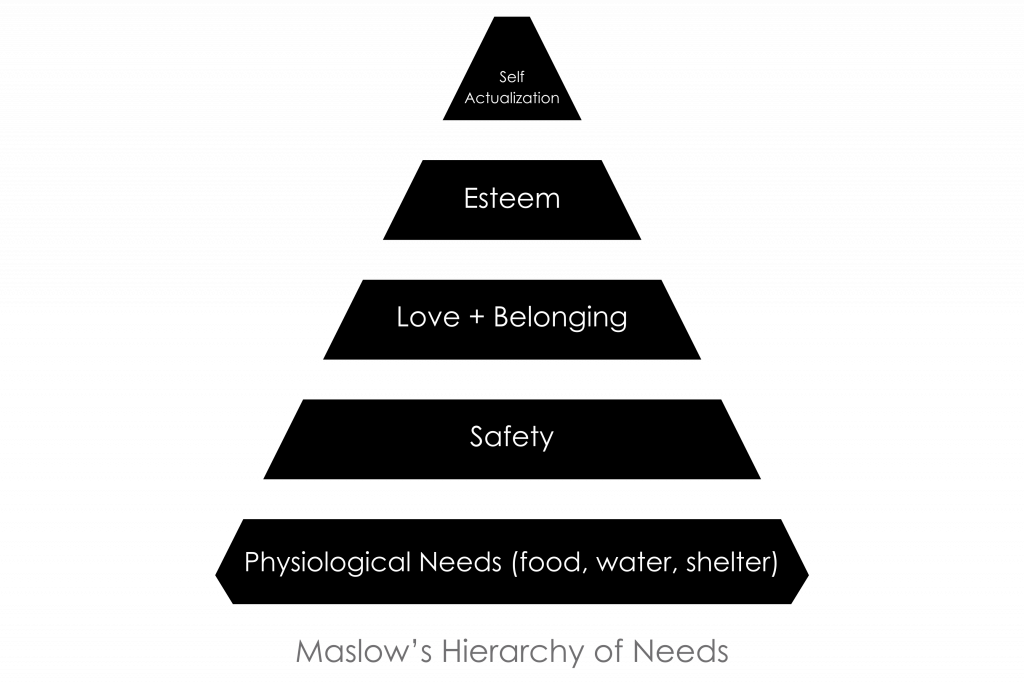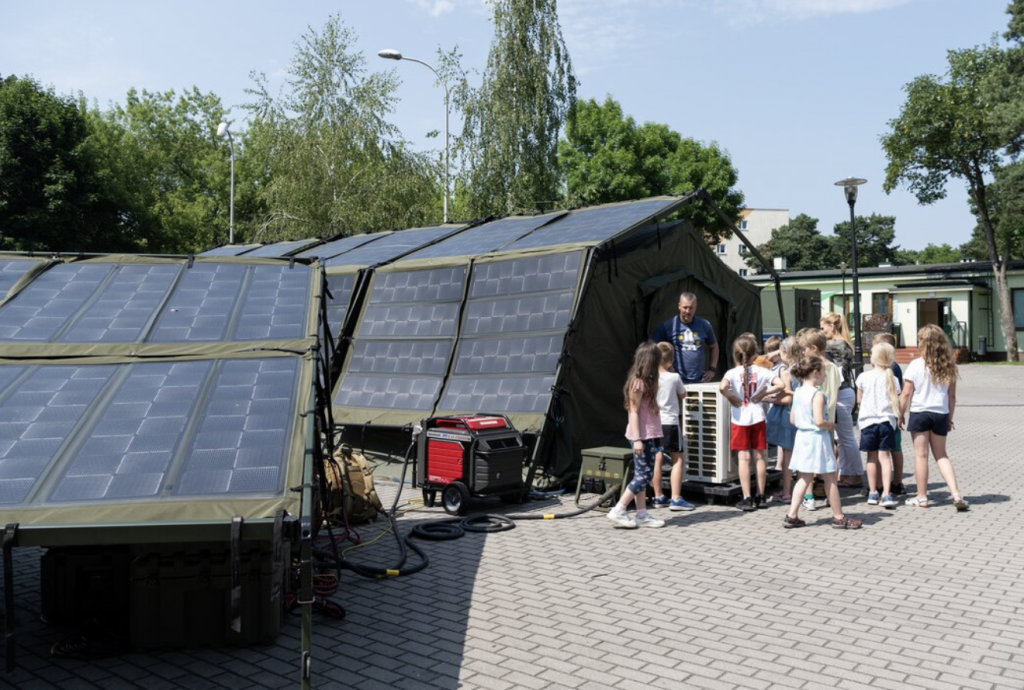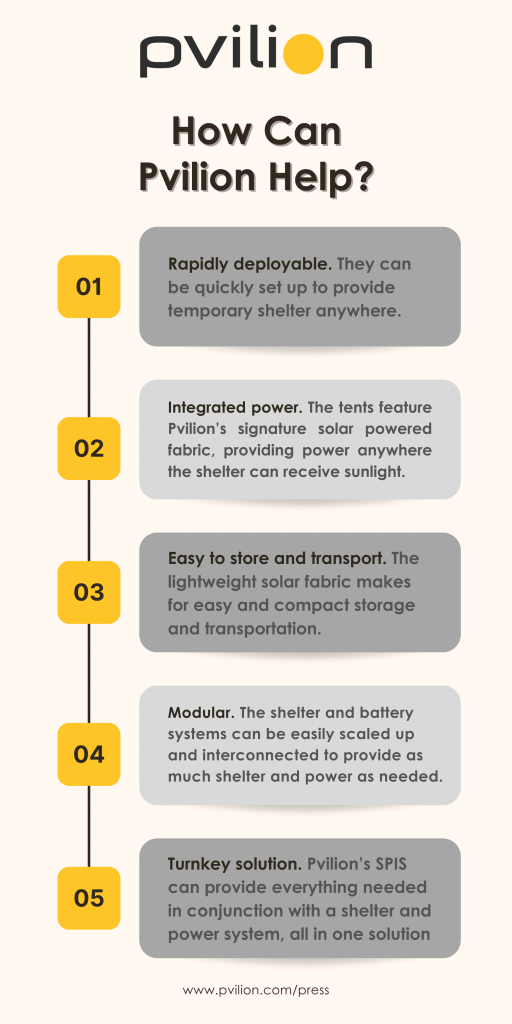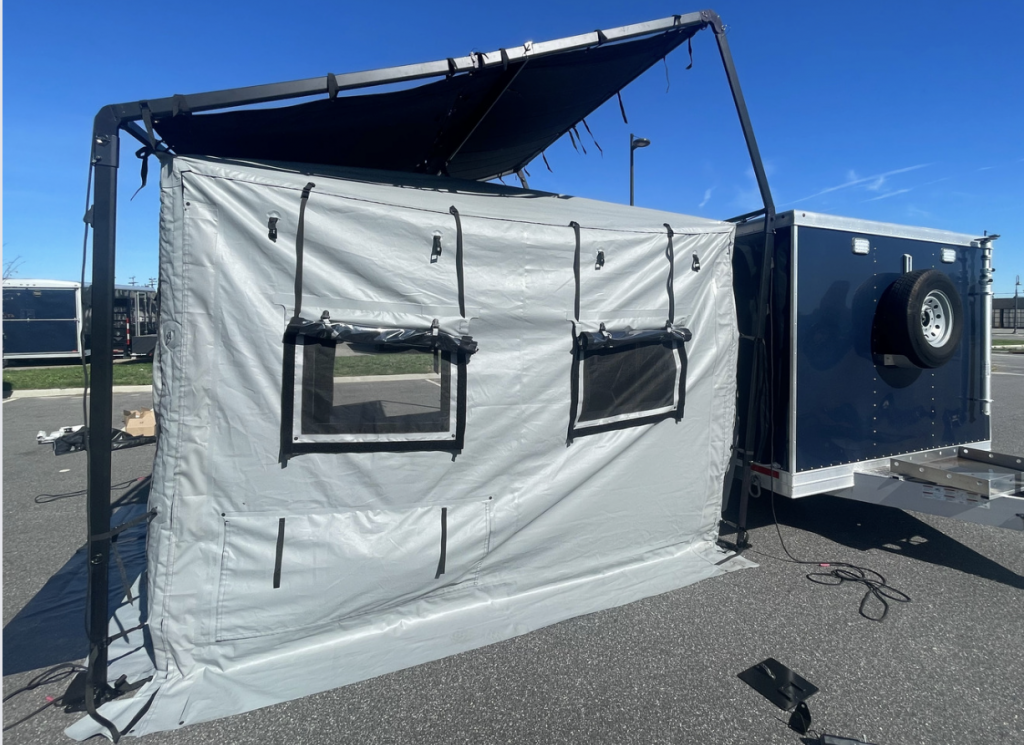Pvilion Blog | February 23, 2024 | By Julia Fowler
In any emergency, two of the most essential tools are shelter and power. Without first meeting the need for shelter and power during times of crisis, individuals are left vulnerable, and emergency responders cannot treat the community as safely until they are in place.
Types of Disaster
Disaster can strike anywhere at any time. This map from the American Red Cross demonstrates where different types of natural disasters are likely to occur in the US.
There are a variety of situations that constitute a state of emergency, including the following:
- Natural disasters like earthquakes, wildfires, hurricanes, extreme temperatures, tornadoes, wildfires, and floods
- Public health crises
- Man-made conflicts such as war
When a state of emergency or other similar event takes place, the appropriate emergency management teams will take action in the affected communities. Response actions are typically organized by the Federal Emergency Management Agency (FEMA).
Need for Shelter
When disaster strikes, shelters serve many purposes. It is one of our most basic requirements for survival – according to Maslow’s Hierarchy of Needs, shelter falls under the most essential human need, physiological needs. Temporary shelter is also one of the core clusters recognized by the United Nations for greater coordination in humanitarian crises.

Not only does shelter offer us a place of refuge, but also space for privacy, dignity, security, treatment, and recovery. Temporary shelter rapidly provides this space during the response phase of an emergency and helps allow for a smooth transition to recovery following disaster.
Shelter Application in an Emergency
- Resiliency hubs
- Medical facilities
- Temporary housing
- Storage & distribution centers
- Communication/command centers
Need for Essential Power
Power is essential for access to medical equipment, heating and cooling systems, communication tools, lighting, water supply, and other critical devices. In situations where affected areas are left with disruptions to the local power grid, the need for power can become dire.
The Power of Solar
When considering off-grid power systems, solar offers several advantages. Some of the key benefits of utilizing solar in emergencies include:
- Sustainable power. Solar is a renewable resource that harvests the sun’s energy and stores it in batteries that don’t release harmful emissions.
- No need for fuel resupply. Since solar power is continuously derived from photovoltaic panels, there is no need to source battery systems with fuel.
- Dependability. During times of crisis, it is important to have a system you can rely on to provide power for essential activities.
- User friendly. Solar power systems are very user friendly and require little maintenance.
- Silent. The batteries used in solar power systems are completely silent, unlike the loud and ear damaging roar of a diesel generator.

How Can Pvilion Help?
Pvilion’s Solar Power Integrated Structures (SPIS) integrate solar power into shelters that are designed to meet the specific needs of emergency response. The features of Pvilion’s SPIS include:

It’s important to be prepared for unexpected situations and emergencies. Our focus at Pvilion is to make clean energy and shelter available in any setting, at any time. Pvilion’s Solar Powered Integrated Structures are designed to be durable and easy to use. That way, when the unexpected occurs, communities have easy access to safe and reliable shelter and power as quickly as possible.
30% Incentive Tax Credit
All Pvilion Solar Powered Integrated Structures also qualify for a 30 percent tax credit thanks to the Inflation Reduction Act. Under this act, nonprofits, government agencies, and other tax-exempt entities can still benefit through the elective pay provision. This means purchasers can receive 30 percent of the entire system’s value back, thanks to its solar integration.

To learn more about how the ITC works, click here.
Want to learn more about how Pvilion Solar Powered Integrated Structures can help with your resiliency needs? Get in touch with our solar shelter experts to learn more and receive a free quote.
 news + press
news + press
